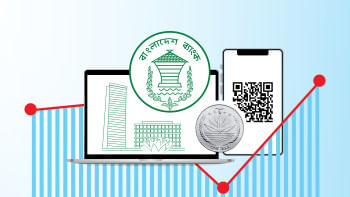Encashing the demographic dividend
A report launched recently by the World Bank found a significant decrease in poverty and steady job growth in South Asia and projected the sub-continent as being the largest contributor to the global workforce over the next 20 years with demographic transition leading to 350 million people entering the working age population in the next 20 years.
This is also true of Bangladesh, with 1.2 million new jobs every year as well as improved job quality between the years 2000 and 2010. However, according to the report, the country needs up to 1.5 million new jobs each year for the next 20 years in order to accelerate economic growth. In fact, it could have generated more jobs for the working age population had the top five constraints -- namely, lack of electricity, political instability, corruption, lack of access to land and complicated tax administration -- not created hindrances. Power outage in itself has been said to cost the country $1 billion through production loss and high costs of self-generation and reduce GDP by 0.5 percent. A high prevalence of bribe payment was found and bribe used to influence tax inspections has been found to increase costs of compliance and opportunities for corruption.
While the quantity as well as quality of jobs has increased and improved respectively, there has been little upward mobility among the self-employed, casual labourers and regular wage or salaried earners. Education remains the key to labour mobility, with educated youth often able to manage some form of employment but the uneducated group left helpless. The challenge for Bangladesh is to create jobs of higher quality and this can be done, besides addressing the abovementioned factors, by investing in education, health and nutrition, infrastructure, and economic reform. The demographic dividend must be encashed in order to bring significant change to the employment sector in Bangladesh.

 For all latest news, follow The Daily Star's Google News channel.
For all latest news, follow The Daily Star's Google News channel. 



Comments